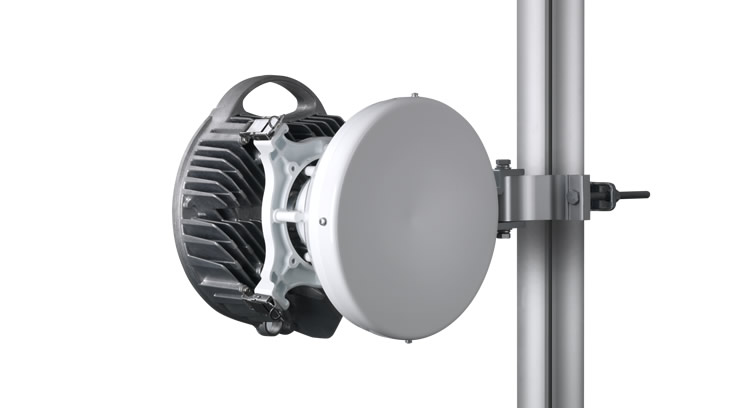Michelle Donegan is a tech writer who has covered the communications industry for more than 25 years on both sides of the pond. Having worked for various industry titles, including Communications Week International, Total Telecom and Light Reading, she specializes in mobile network technology trends.

Above shows CBNL’s VectaStar 600 remote terminal with a 20cm antenna.
Fixed Wireless Access (FWA) is expected to be among the first commercialised use cases for 5G, and Cambridge Broadband Networks (CBNL) will be ready for it. The UK-based millimetre wave FWA company has expanded its VectaStar portfolio to include a platform that operates in unpaired Time Division Duplex (TDD) spectrum, which is a key requirement for 5G.
The platform supports 200MHz, 100MHz and 50MHz channelization and enables 1Gbps speeds for residential and enterprise broadband or fixed wireless connectivity for smart city applications.
Once 5G New Radio (5G NR) modem chipsets become readily available, then CBNL will be able to slot those in to the existing platform to become fully 5G compliant. For now, with the choice of TDD or Frequency Division Duplex (FDD) operation, the platform is 5G-ready.
CBNL CTO Dr. John Naylon told 5G.co.uk, “Our platform allows operators to go out and acquire spectrum now, use it and monetise it immediately.”
CBNL’s point-to-multipoint system supports millimetre wave bands. Other features include a customisable, frequency agnostic, modular architecture; small form factor; easily aligned Customer Premises Equipment (CPE) for simplified installation; support for network slicing; as well as a beam-forming antenna system that extends coverage range.
Following the FWA Opportunity
Founded in 2000, and based in Cambridge, CBNL has been in the point-to-multipoint FWA and wireless backhaul business for some time. But most of its business is from outside the UK, predominantly in Europe, the Middle East and US. In the US, the company has built 31 pre-5G FWA networks over the last four years that are now providing residential and business broadband services.
According to Dr. Naylon, there is no real barrier to widespread deployment of FWA in the UK. But today, in the mix of access technologies, wireless access is less than 1% of residential broadband connections in the country. “We think it’s realistic to say that FWA driven by the cost advantages that the 5G ecosystem brings could get to around 20% penetration in the UK,” he said.
5G FWA is expected to be not only more consistently fast but also cheaper than fixed broadband, because it is less costly to install than, for example, laying fibre-to-the-home (FTTH).
In the UK, one of the first 5G FWA trials was conducted in central London with BT, Samsung and Arquiva, which was deployed using 28GHz spectrum. More recently, UK operator Three demonstrated 5G home broadband with Huawei.
Useful read: What is Fixed Wireless Access
50% off Lyca Mobile’s Pay As You Go plans
Lyca Mobile’s cheap Pay As You Go deals include roaming and international minutes.









